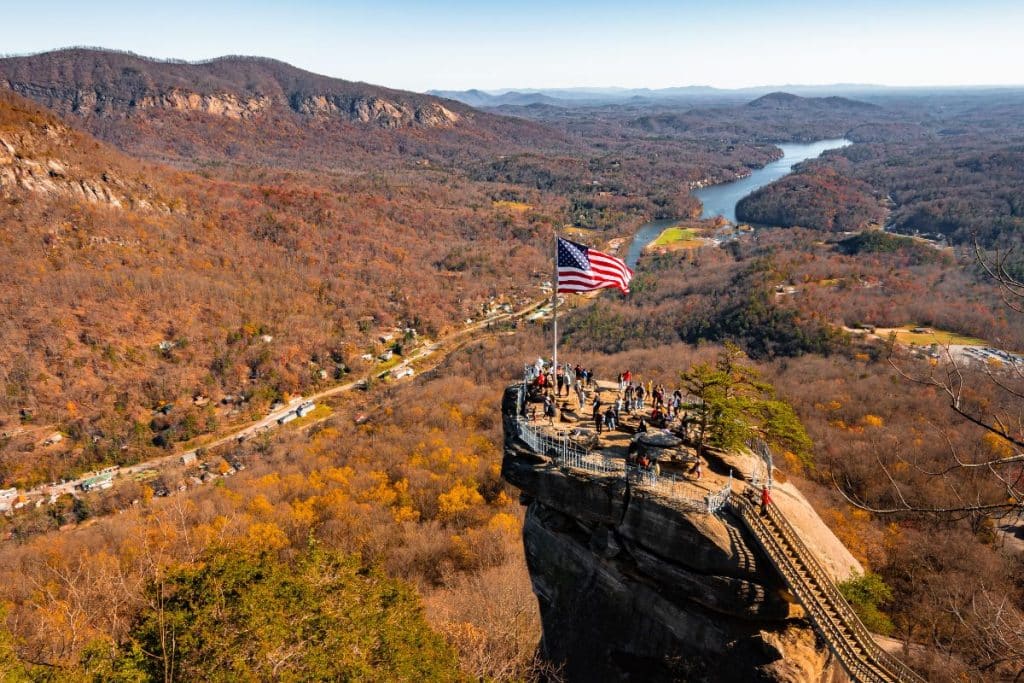North Carolina is home to the Blue Ridge Mountains, a region covered in trees with leaves that turn vibrant colors every fall. The turning of the leaves is a delight for nature lovers, and there is no end to the unique locations where you can observe the changing of the season.
The following destinations offer the opportunity to see fall colors in a variety of settings, ranging from urban to mountainous and a little bit of everything in between, for the best viewing pleasure.
Chimney Rock
The area in and around Chimney Rock offers the opportunity to see the color changes creep from the peaks to the valleys over time. The Blue Ridge Mountains are known for their long fall color season, meaning leaf watchers can return to the area to see how the leaf colors change over time. Try hiking the Hickory Nut Falls Route for the best views of the trees at Chimney Rock.
Pilot Mountain State Park
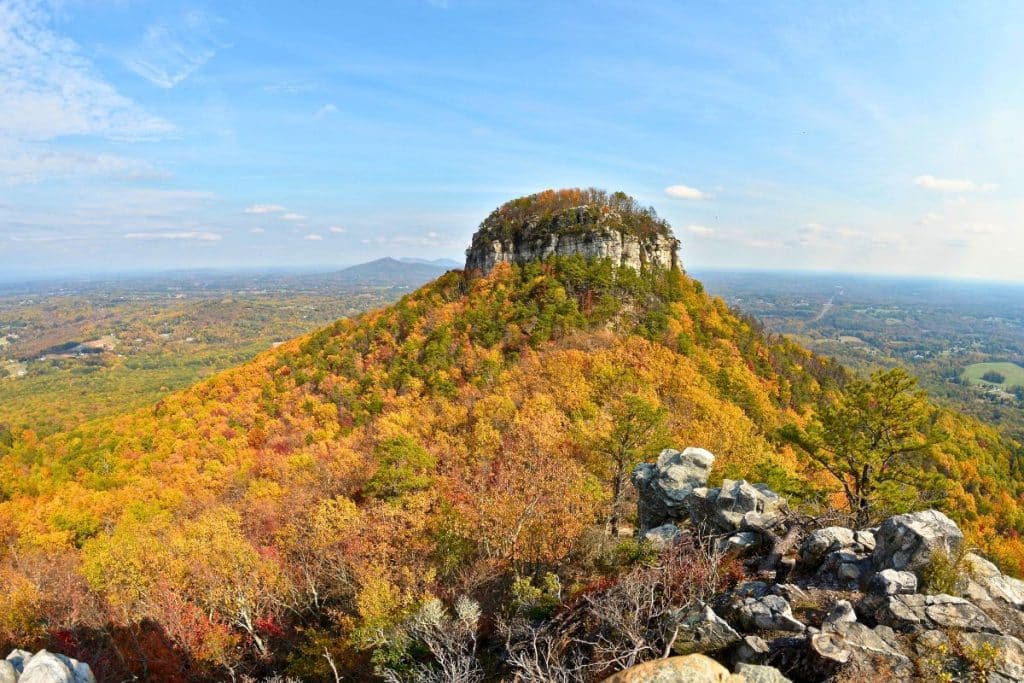
Pilot Mountain State Park is a popular place for outdoor activities such as biking, hiking and mountain climbing.
The most popular attraction in the park is the eponymous Pilot Mountain, which offers unparalleled views of the surrounding landscape and is a perfect place to view the fall colors. The summit is also handicapped accessible, meaning virtually anyone can enjoy the experience of fall colors from a great height.
Asheville
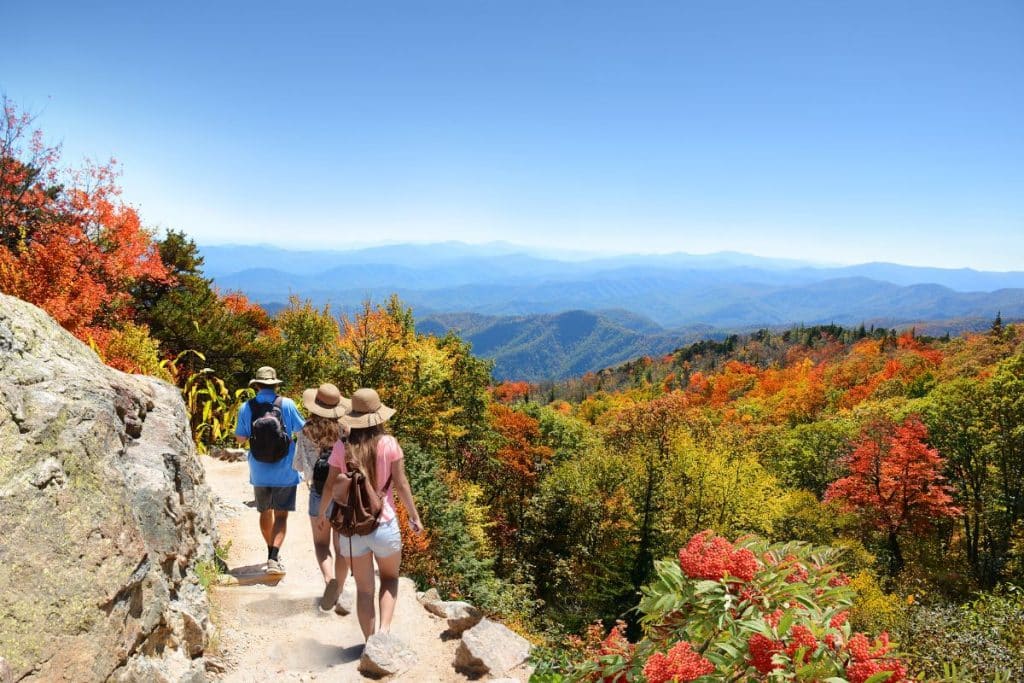
Asheville’s focus on combining an urban environment with nature allows the city to blend in with the surrounding Blue Ridge Mountains during the fall.
It’s also home to gems like the North Carolina Arboretum, French Broad River Park, and the Blue Ridge Parkway that offer city residents the opportunity to enjoy fall colors without leaving the city.
Sugar mountain
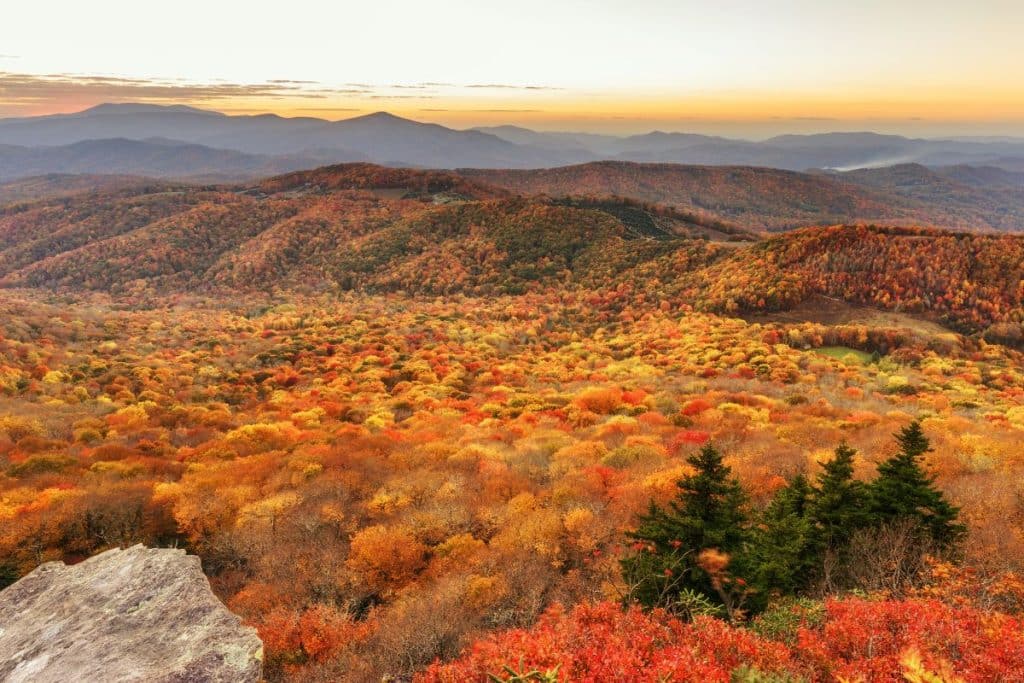
Located between Banner Elk and Grandfather Mountain, Sugar Mountain is known for its incredible scenery and fall colors. It’s a great place for those who want to spend a day viewing fall colors and experiencing the beauty of the High Country. Make sure you go early in the fall to make the most of the colors, as the leaves turn and fall quickly.
Table Rock
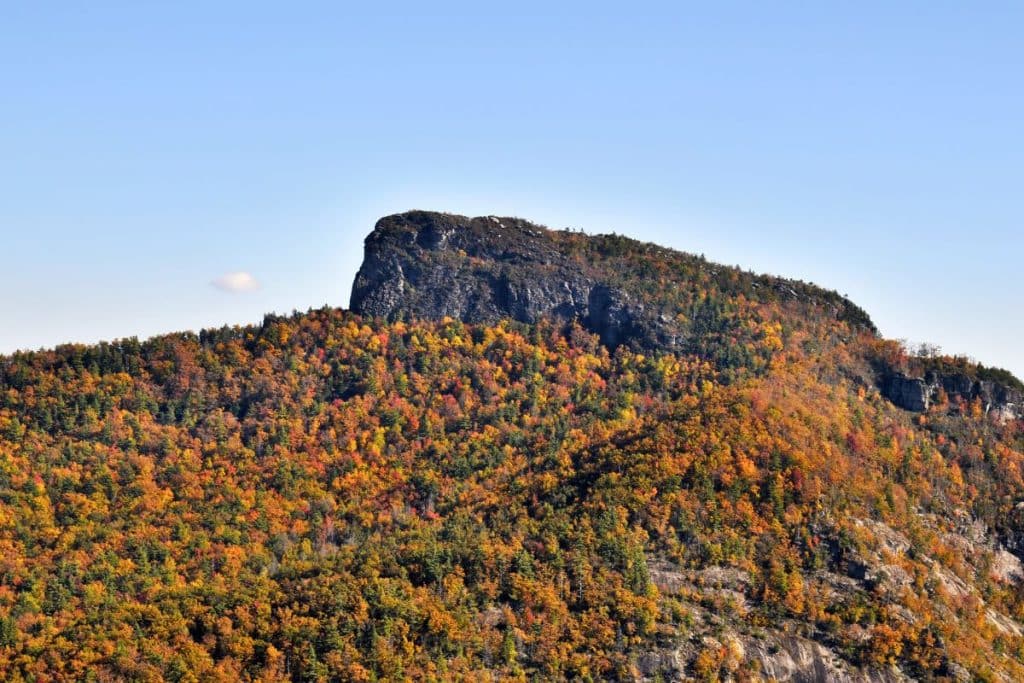
Table Rock overlooks the Linville Gorge and offers fantastic views of the trees and plants that cover the area. To reach the top, you must climb a 1.8 km path, with occasional steep climbs along the way. However, the summit is safe to explore and offers multiple vantage points from which to view the fall colors.
The road to reach the trailhead is a 9.5-mile trip from Highway 181 and involves driving on an unpaved Pisgah National Forest road. Getting to the trailhead is a bit of a challenge, and low clearance cars won’t get through.
Biltmore estate
The Biltmore Estate is a shining example of the Gilded Age with its acres of landscaped lawns surrounding the home. The trees along the extensive, manicured lawns turn vibrant colors during autumn and form a beautiful frame for the country house. There are plenty of places to stop and take photos from different angles to capture images of the best the estate has to offer.
Blowing rock
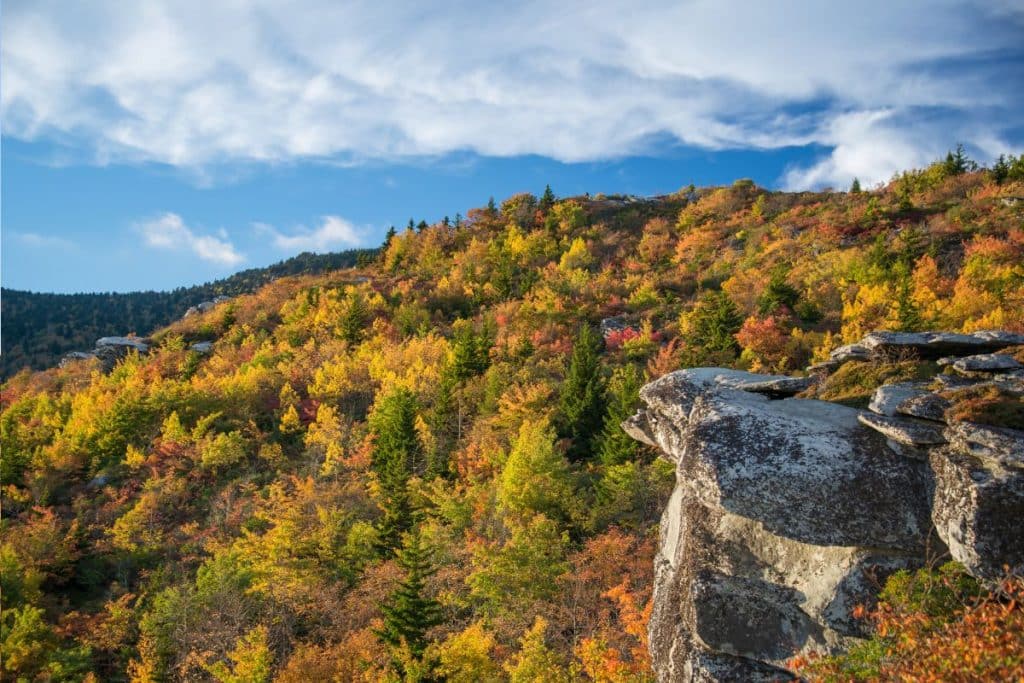
Blowing Rock is a picturesque town named after the nearby formation known as The Blowing Rock. It is also the oldest tourist attraction in North Carolina and is located just off the Blue Ridge Parkway. Visit the shops in town and then head to The Blowing Rock to view the fall foliage in the Johns River Gorge.
Looking Glass falls in the Pisgah National Forest
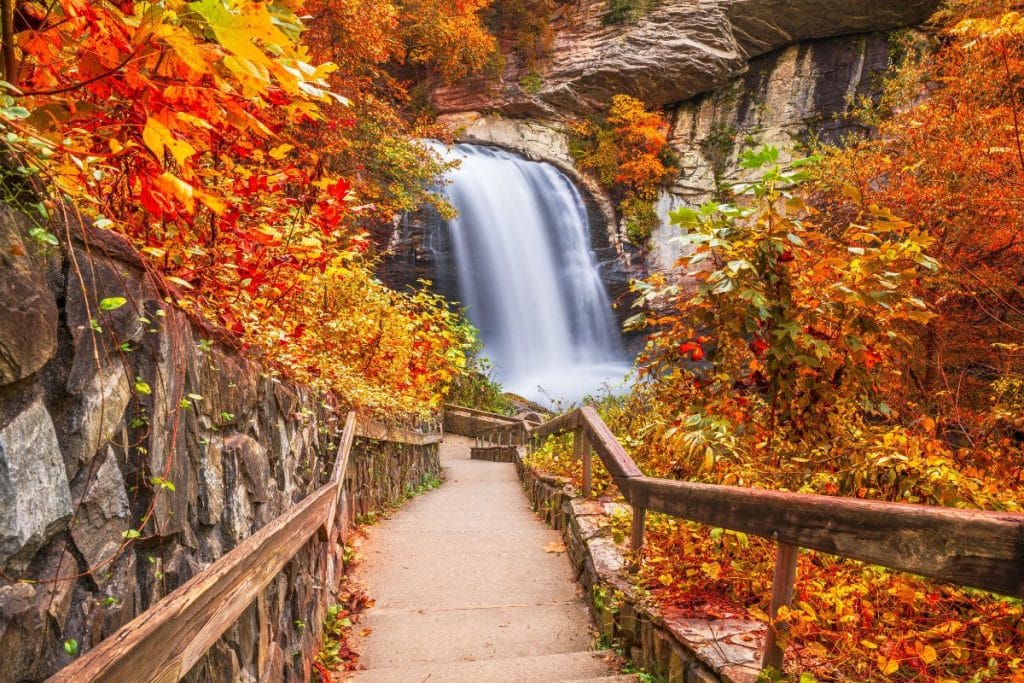
Looking glass falls is located right next to US 276 and is considered the most easily accessible waterfall in the state. Visitors can drive off the road to the parking lot and take a short hike to view the waterfall. A staircase leads to the falls and it is safe to wade in the water. It’s a beautiful destination for people who want to experience the fall colors the region is known for, but can’t reach some of the more mountainous destinations.
Little Switzerland

Little Switzerland looks a lot like its European counterpart with its mountainous terrain and rolling valleys dotted with green meadows. It’s a beautiful place all year round, but the trees explode with color as their leaves turn in late October. The Blue Ridge Parkway offers the best views of the trees, and the elevation changes provide ever-changing views of the foliage.


